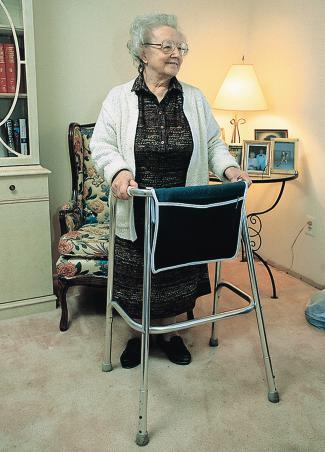Recognizing & Reporting Red Flags for the Physical Therapist Assistant
Catherine Cavallaro Goodman, MBA, PT, CBP
Medical Multimedia Group
Faculty Affiliate
University of Montana
Missoula, Montana
Charlene Marshall, BS, PTA
Aegis Therapies at Golden Living Center
Marshfield, Wisconsin
3251 Riverport Lane St. Louis, Missouri 63043
RECOGNIZING AND REPORTING RED FLAGS FOR THE PHYSICAL THERAPIST ASSISTANT
Copyright © 2015 by Saunders, an imprint of Elsevier Inc.
ISBN: 978-1-4557-4538-8
All rights reserved. No part of this publication may be reproduced or transmitted in any form or by any means, electronic or mechanical, including photocopying, recording, or any information storage and retrieval system, without permission in writing from the publisher. Details on how to seek permission, further information about the Publisher’s permissions policies and our arrangements with organizations such as the Copyright Clearance Center and the Copyright Licensing Agency, can be found at our website: www.elsevier.com/permissions.
This book and the individual contributions contained in it are protected under copyright by the Publisher (other than as may be noted herein).
Notices
Knowledge and best practice in this field are constantly changing. As new research and experience broaden our understanding, changes in research methods, professional practices, or medical treatment may become necessary.
Practitioners and researchers must always rely on their own experience and knowledge in evaluating and using any information, methods, compounds, or experiments described herein. In using such information or methods they should be mindful of their own safety and the safety of others, including parties for whom they have a professional responsibility.
With respect to any drug or pharmaceutical products identified, readers are advised to check the most current information provided (i) on procedures featured or (ii) by the manufacturer of each product to be administered, to verify the recommended dose or formula, the method and duration of administration, and contraindications. It is the responsibility of practitioners, relying on their own experience and knowledge of their patients, to make diagnoses, to determine dosages and the best treatment for each individual patient, and to take all appropriate safety precautions.
To the fullest extent of the law, neither the Publisher nor the authors, contributors, or editors, assume any liability for any injury and/or damage to persons or property as a matter of products liability, negligence or otherwise, or from any use or operation of any methods, products, instructions, or ideas contained in the material herein.
Library of Congress Cataloging-in-Publication Data
Goodman, Catherine Cavallaro, author.
Recognizing and reporting red flags for the physical therapist assistant / Catherine Cavallaro Goodman, Charlene Marshall. p. ; cm.
Includes bibliographical references and index. ISBN 978-1-4557-4538-8 (pbk. : alk. paper)
I. Marshall, Charlene, author. II. Title.
[DNLM: 1. Physical Therapy Modalities. 2. Physical Therapist Assistants. 3. Signs and Symptoms. WB 460] RM699.3
615.8'2092—dc23
Executive Content Strategist: Kathy Falk
Content Development Manager: Jolynn Gower
Publishing Services Manager: Jeff Patterson
Project Manager: Tracey Schriefer
Design Direction: Karen Pauls
Printed in China.
Last digit is the print number: 9 8 7 6 5 4 3 2 1
2014016497
This first edition is dedicated to my mom… Charlotte. You have always been the most influential person in my life with a connection that I continue to hold onto every day. I am proud to be your daughter and can’t thank you enough for your unconditional love. Because of you I have learned to persevere and to live life without regrets. I believe that this book will teach future and current PTAs to be the best that they can be when caring for people and I know that you would be proud of that… I quote you when I say “Love you lots!” I will miss you till I see you again.
Charlene
In a rare departure from my usual approach, I am going to “tell on myself” and do so in hopes that you, the reader, will see why I think this text is so important. You see, I have never worked with a physical therapist assistant (PTA) before now. My past experience was limited to occasional interactions only with on-the-jobtrained aides or assistants. And that was years ago.
So I never fully realized the need for the PTA to have an instructional/reference text like this.
In fact, I am embarrassed to admit even now that I once questioned why in the world did Montana (where I live) have a school to train PTAs? And how was that going to affect the jobs of physical therapists (PTs)? Yes, I had fallen into the trap of seeing the PTA as “competition.”
And then I met Charlene Marshall, who is a PTA (and at the time that this text was written, she was PTA Faculty and Clinical Coordinator at Great Falls College–Montana State University). She was able to clearly, carefully, and collegially educate me. And now she has helped me provide the information in this text about recognizing yellow or red flags of systemic disease and instruct the PTA in how to identify (and then report to the PT) anything suspicious.
This is so important to the health of our patients/ clients. All health care workers must have this information. It is in the best interest of our patient/client that everyone who has contact with that individual is on his or her toes and always watching for yellow or red flags.
Some conditions will be missed even with proper screening by any health care professional because the condition is early in its presentation and has not progressed enough to be recognizable. In some cases, early recognition makes no difference to the outcome, either because nothing can be done to prevent progression of the condition or there is no adequate treatment available. But most of the time, early recognition and reporting by the PTA to the PT with follow-up evaluation by the PT and/or referral to a more appropriate health care professional can yield better outcomes for the patient/client.
Any patient or client can present with red flags requiring reevaluation and at any time—even those
individuals who have a clearly identified NMS problem that is clearly within the scope of the PT/PTA practice— because people often have more than one condition or problem and even many more comorbidities.
Using features such as The PTA Action Plan, Points to Ponder, and Picture the Patient, the material in this first-time-ever presented text will bring the student or working PTA up to date with current best practice across all health care disciplines. The methods and clinical decision-making model for recognizing red flags presented in this text apply to all practice settings.
As you will soon read and see in the Introduction to Recognizing and Reporting Red Flags for the Physical Therapist Assistant (Chapter 1), we clearly delineate and differentiate the roles of the physical therapist versus the physical therapist assistant in this area of patient/ client observation.
The role of the PTA in performing ongoing assessments and providing accurate information to the PT is an important one. This is especially true regarding any red flags or new or developing signs and/or symptoms.
Another skill that is important for the PTA to develop early on is to provide effective and efficient treatments to the patient/client. With the changes in health care today, it is crucial that the PT and PTA can work together to provide adequate therapeutic interventions in fewer treatment sessions. We believe that the information provided in this text will not only teach the student PTA, but will also provide important knowledge to the working PTA with any amount of clinical experience. We hope this text will adequately highlight this information for you.
And we want to be clear that the purpose of this text is to help the PTA recognize areas that are beyond the scope of his or her practice or expertise. The aim is to provide a step-by-step method for PTAs to identify clients who need further evaluation by the PT or referral or consultation as appropriate with other health care professionals.
Catherine C. Goodman, MBA, PT, CBP
Charlene Marshall, BS, PTA
1 Introduction to Recognizing and Reporting Red Flags for the Physical Therapist Assistant, 1 2 Pain Types and Viscerogenic Pain Patterns, 15 3 Recognizing, Documenting, and Reporting Red Flags, 49 4 Review of Systems for the Physical Therapist Assistant, 97
Recognizing and Reporting Red Flags in the Head, Neck, and Back, 141
Recognizing and Reporting Red Flags in the Upper Extremity, 179 7 Recognizing and Reporting Red Flags in the Lower Extremity, 201
Recognizing & Reporting Red Flags for the Physical Therapist Assistant
Introduction to Recognizing and Reporting Red Flags for the Physical Therapist Assistant
INTRODUCTION
The physical therapist’s (PT’s) responsibility is to make sure that each patient/client is an appropriate candidate for physical therapy. The therapist determines what biomechanical or neuromusculoskeletal problem is present, determines a human movement diagnosis, and then treats the problem as specifically as possible. The physical therapist assistant (PTA) follows through by carrying out the plan of care and providing ongoing feedback on the patient/client’s response to the intervention.
As part of the PT’s diagnostic process, each patient or client is screened for medical disease. PTs assess for signs and symptoms of systemic disease that can mimic neuromuscular or musculoskeletal (herein referred to as neuromusculoskeletal, or NMS) dysfunction. Peptic ulcers, gallbladder disease, liver disease, and myocardial ischemia are only a few examples of systemic diseases that can cause shoulder or back pain. Other diseases can present as primary neck, upper back, hip, sacroiliac, or low back pain and/or symptoms.
Cancer screening is a major part of the therapist’s screening process. Cancer can present as primary neck, shoulder, chest, upper back, hip, groin, pelvic, sacroiliac, or low back pain/symptoms. Whether there is a primary cancer or cancer that has recurred or metastasized, clinical manifestations can mimic NMS dysfunction. The therapist must know how and what to look for to screen for cancer.
The PTA’s role is important for performing ongoing assessments and providing information to the PT regarding any red (warning) flags or new or developing signs and/or symptoms. This text is intended to help PTAs recognize areas that are beyond the scope of their practice or expertise. The goal is to provide a step-by-step method for PTAs to identify clients who need further evaluation by the PT or referral or consultation as appropriate with other health care professionals.
Any patient or client can present with red flags requiring reevaluation and at any time—even those individuals who have a clearly identified NMS problem
within the scope of the PT/PTA practice because people often have more than one condition or problem and even many more comorbidities. The methods and clinical decision-making model for recognizing red flags presented in this text apply to all practice settings.
With evidence-based medicine, relying on a red-flag checklist based on the history has proved to be a very safe way to avoid missing the presence of serious disorders. Efforts are being made to validate red flags currently in use. When serious conditions have been missed, it is not for lack of special investigations, but for lack of adequate and thorough attention to clues in the history.1,2
Some conditions will be missed even with proper screening by the physical therapist because the condition is early in its presentation and has not progressed enough to be recognizable. In some cases, early recognition makes no difference to the outcome, either because nothing can be done to prevent progression of the condition or no adequate treatment is available.1 Most of the time, however, early recognition and reporting by the PTA to the PT with follow-up evaluation by the PT and/or referral to a more appropriate health care professional can yield better outcomes for the patient/ client.
TEXTBOOK ELEMENTS
Throughout this text, we have tried to provide helpful elements to guide the PTA and PTA instructor. For example, case examples are provided with each chapter to give the PTA a working understanding of how to recognize the need for additional questions. In addition, information is given concerning the type of questions to ask and when to document and consult with the PT. Each case is based on actual clinical experiences to provide reasonable examples of what the PTA can expect in a variety of inpatient/client and outpatient/client clinical practices.
Picture the Patient is a feature offered to help the student better visualize and understand what to look for when assessing and/or working with patients/clients.
Clinical presentation, especially typical red flag signs, and symptoms of emerging problems are included. The PTA Action Plan gives the PTA student an opportunity to see the clinical application of the text material. These sections include the “how tos” of observing, documenting, and reporting red (or yellow) flags to the physical therapist (or other health care provider when appropriate). Follow-up Questions, Points to Ponder, What to Watch For, and Communication with the Physical Therapist are just a few examples of the components included throughout the text in this section.
BOX 1-1 RED FLAGS
The presence of any one of these symptoms is not usually cause for extreme concern but should raise a red flag for the alert physical therapist assistant (PTA). The therapist will be looking for a pattern that suggests a viscerogenic or systemic origin of pain and/or symptoms. The therapist will proceed with the screening process, depending on which symptoms are grouped together. Often the next step is to conduct a risk factor assessment and look for associated signs and symptoms. The PTA can assist in this process by reporting any information not previously disclosed to the therapist and/or not documented in the medical record.
Past Medical History (Personal or Family)
• Personal or family history of cancer
• Recent (last 6 weeks) infection (e.g., mononucleosis, upper respiratory infection [URI], urinary tract infection [UTI], bacterial such as streptococcal or staphylococcal, viral such as measles or hepatitis), especially when followed by neurologic symptoms 1 to 3 weeks later (Guillain-Barré syndrome), joint pain, or back pain
• Recurrent colds or flu with a cyclical pattern (i.e., the client reports that he or she just cannot shake this cold or the flu, or that it keeps coming back)
• Recent history of trauma, such as motor vehicle accident or fall (fracture, any age), domestic violence, or minor trauma in older adult with osteopenia/osteoporosis
• History of immunosuppression (e.g., steroids, organ transplant, human immunodeficiency virus [HIV])
• History of injection drug use (infection)
Risk Factors
Risk factors vary, depending on family history, personal history, and disease, illness, or condition present. For example, risk factors for heart disease will be different from risk factors for osteoporosis or vestibular or balance problems. As with all decision-making variables, a single risk factor may or may not be significant and must be viewed in context of the whole patient/client presentation. This
The Case Examples and Critical Thinking Activities provide opportunities for students and instructors to engage in dialogue and discussion about the role of the PTA as a team member and in relation to the supervising PT when observing, documenting, and reporting potential red (or yellow) warning/cautionary flags.
YELLOW OR RED FLAGS
The role of the PTA in identifying yellow (caution) or red (warning) flag histories and signs and symptoms is important (Box 1-1). A yellow flag is a cautionary or
represents only a partial list of all the possible health risk factors.
Substance use/abuse
Tobacco use
Alcohol use/abuse
Sedentary lifestyle
Age Race/ethnicity
Gender Domestic violence
Body mass index (BMI)
Hysterectomy/oophorectomy
Exposure to radiation Occupation
Clinical Presentation
• No known cause, unknown etiology, insidious onset
• Symptoms that are not improved or relieved by physical therapy intervention
• Physical therapy intervention not changing the clinical picture (the client may get worse!)
• Symptoms that get better after physical therapy intervention, but then get worse again—a red flag identifying the need for re-evaluation by the therapist
• Significant weight loss or gain without effort (e.g., more than 10% of the client’s body weight in 10 to 21 days)
• Gradual, progressive, or cyclical presentation of symptoms (worse/better/worse)
• Unrelieved by rest or change in position; no position is comfortable
• If relieved by rest, positional change, or application of heat, in time, these relieving factors no longer reduce symptoms.
• Symptoms seeming out of proportion to the injury
• Symptoms persisting beyond the expected time for that condition
• Does not fit the expected mechanical or neuromusculoskeletal pattern
• No discernible pattern of symptoms
• A growing mass (painless or painful) considered a tumor until proved otherwise; a hematoma should decrease (not increase) in size with time.
• Postmenopausal vaginal bleeding (bleeding that occurs a year or more after the last period [significance
BOX 1-1 RED FLAGS—cont’d
depends on whether the woman is on hormone replacement therapy and which regimen is used])
• Bilateral symptoms:
Edema Clubbing
Numbness, tingling Nail-bed changes
Skin pigmentation changes Skin rash
• Change in muscle tone or range of motion (ROM) for individuals with neurologic conditions (e.g., cerebral palsy, spinal-cord injured, traumatic-brain injured, multiple sclerosis)
Pain Pattern
• Back or shoulder pain (most common location of referred pain; other areas can be affected as well, but these two areas signal a particular need for the therapist’s attention)
• Pain accompanied by full and painless ROM
• Night pain (constant and intense; see complete description in Chapter 3)
• Symptoms (especially pain) constant and intense (Remember to ask anyone with “constant” pain: “Are you having this pain right now?”)
• Pain made worse by activity and relieved by rest (e.g., intermittent claudication; cardiac: upper quadrant pain with the use of the lower extremities while upper extremities are inactive)
• Pain described as throbbing (vascular), knife-like, boring, or deep aching
• Pain that is poorly localized
• Pattern of pain coming and going like spasms, colicky
• Pain accompanied by signs and symptoms associated with a specific viscera or system (e.g., gastrointestinal, genitourinary, gynecologic, cardiac, pulmonary, endocrine)
• Change in musculoskeletal symptoms with food intake or medication use (immediately or up to several hours later)
Associated Signs and Symptoms
• Recent report of confusion (or increased confusion); this could be a neurologic sign; it could be drug induced (e.g., nonsteroidal antiinflammary drugs) or a sign of infection; usually it is a family member who takes the PTA aside to report this concern
• Presence of constitutional symptoms (see Box 1-3) or unusual vital signs (see Discussion, Chapter 3); body temperature of 100° F (37.8° C) usually indicates a serious illness
• Proximal muscle weakness, especially if accompanied by change in deep tendon reflexes
• Joint pain with skin rashes, nodules (see discussion of systemic causes of joint pain, Chapter 3; see Table 3-6)
• Any cluster of signs and symptoms observed during the Review of Systems that are characteristic of a particular organ system (see Box 4-19)
• Unusual menstrual cycle/symptoms; association between menses and symptoms
• It is suggested that the PTA ask each patient/client a question at the beginning of each treatment session, such as, “Are there any new symptoms or problems anywhere else in your body that have developed in the last 24 hours (or since I saw you last)?”
PTA Action Plan
warning symptom that signals one to “slow down” and think about the need to conduct a more formal observation/assessment. Red flags are features of the individual’s medical history and clinical examination thought to be associated with a high risk of serious disorders such as infection, inflammation, cancer, or fracture.3,4 A red-flag symptom requires immediate attention, either to ask the individual some additional questions and/or bring the information to the attention of the PT.
Listening for yellow- or red-flag symptoms and observing for red-flag signs can be easily incorporated into everyday practice. It is a matter of listening and looking intentionally. The presence of a single yellow or red flag is not usually cause for immediate concern. Each cautionary or warning flag must be viewed in the context of the whole person given the age, gender, past medical history, known risk factors, medication use, and current clinical presentation of that patient/client.
Documenting and Reporting Yellow or Red Flags
Anytime a yellow or red flag is observed or reported, the PTA must document this in the record and report it to the PT. This is true even for single individual flags that may seem inconsequential at the time (remember “Progression of Disease”—what appears benign now may develop into something more significant later; a record of its first appearance can be extremely helpful). Cases of isolated symptoms will be presented in this text as they occur in clinical practice. Symptoms of any kind that present bilaterally always raise a red flag for concern and further investigation.
Clusters of two or three or more yellow and/or red flags may not represent an emergency but must be documented and reported. Each case is evaluated on its own. Re-evaluation by the PT is warranted when risk factors for specific diseases are present that have not been known or both risk factors and red flags are present at the same time.
Even as we write this, the focus on red flags in assessment has been called into question, so this remains an evolving practice.5,6 It has been reported that in the primary care (medical) setting, some red flags have high false-positive rates and have very little diagnostic value when used by themselves.7,8 Efforts are being made to identify reliable red flags that are valid based on patient-centered clinical research. Whenever possible, those yellow/red flags are reported in this text.7,9,10 Yellow and red flags are only one tool the PTA will monitor. In addition, the PT will review the patient/client’s history, presenting pain pattern, and possible associated signs and symptoms along with results from treatment administered by the PTA in making a decision to modify treatment or consult with other disciplines.
Key Factors to Consider
Three key factors the PTA should always keep in mind (because these create red flag signs and symptoms) are:
• Side effects of medications
• Comorbidities
• Visceral pain mechanisms
If the medical diagnosis is delayed, the correct diagnosis is eventually made when:
1. The patient/client does not get better with physical therapy intervention.
2. The patient/client gets better, then worse.
3. Other associated signs and symptoms eventually develop.
At time, a patient/client with NMS complaints is actually experiencing the side effects of medications. In fact, this is probably the most common source of associated signs and symptoms observed in the clinic. Side effects of medication as a cause of associated signs and symptoms, including joint and muscle pain, is discussed more completely in Chapter 2. Visceral pain mechanisms are also discussed in Chapter 2.
As for comorbidities, many patient/clients are affected by other conditions such as depression, diabetes, incontinence, obesity, chemical dependency, hypertension, osteoporosis, and deconditioning, to name just a few. These conditions can contribute to significant morbidity (and mortality) and must be documented as part of the problem list. Physical therapy intervention is often appropriate to address the effects of these comorbidities, but sometimes these problems have not been recognized and addressed yet, so the PTA brings them to the PT’s attention as needed.
Finally, consider the fact that some clients with a systemic or viscerogenic origin of NMS symptoms get better with physical therapy intervention. Perhaps there
is a placebo effect. Perhaps there is a physiologic effect of movement on the diseased state. The physical therapy intervention may exert a positive influence on the body as it tries to regain a balance of health and homeostasis. You may have experienced this phenomenon yourself when coming down with a cold or symptoms of a virus. You felt much better and even symptom free after exercising.
Movement, physical activity, and moderate exercise aid the body and boost the immune system,11-16 but sometimes such measures are unable to prevail, especially if other factors are present such as inadequate hydration, poor nutrition, fatigue, depression, immunosuppression, and stress. In such cases the condition will progress to the point that warning signs and symptoms will be observed or reported and/or the patient/ client’s condition will deteriorate. The need for consultation with the PT will become much more evident.
PICTURE THE PATIENT
The PTA must always keep in mind that medical conditions can cause pain, dysfunction, and impairment of the:
• Back/neck
• Shoulder
• Chest/breast/rib
• Hip/groin
• Sacroiliac (SI)/sacrum/pelvis
But for the most part, the back and shoulder represent the primary areas of referred viscerogenic pain patterns. In essence, anytime a patient or client is being treated for shoulder or back pain, a yellow flag is raised. These two areas are the most commonly affected because the organs are located in the central portion of the body and refer symptoms to the nearby major muscles and joints. This concept will be explained in greater detail in Chapter 2.
PTA Action Plan
Monitoring Vital Signs
Monitoring vital signs is a quick and easy way to identify the need for medical conditions that require further evaluation by the PT. Vital signs are discussed more completely in Chapter 4. Asking about the presence of constitutional symptoms is important, especially when the cause is unknown. Constitutional symptoms refer to a constellation of signs and symptoms present whenever the patient/client is experiencing a systemic illness. No matter what system is involved, these core signs and symptoms are often present.
REASONS THAT RED FLAGS POP UP
The practice of physical therapy has changed many times since it was first started with the Reconstruction
PTA Action Plan
Aides. Clinical practice, as it was shaped by World War I and then World War II, was eclipsed by the polio epidemic in the 1940s and 1950s. With the widespread use of the live, oral polio vaccine in 1963, polio was eradicated in the United States and clinical practice changed again (Fig. 1-1).
Today, most clients seen by therapists have impairments and disabilities that are clearly related to NMS (Fig. 1-2). Most of the time, the client history and mechanism of injury point to a known cause of movement dysfunction. But changes in technology, the vast amount of information about health problems now available, and the aging of America (and subsequent needs of the older adults) have changed the way health care is delivered and the way PTs function. These factors are making it more important than ever that all
health care providers function as a team observing and reporting any unusual, new, or suspicious signs and/or symptoms.
Because today’s health care environment is complex and highly demanding, the PT/PTA team must be alert to red flags of systemic disease at all times. Warning flags may come in the form of reported symptoms or observed signs. It may be a clinical presentation that does not match the recent history. It may be someone who has been given early release from the hospital or transition unit. Specific red and yellow flags are discussed in greater detail later in this chapter, but an understanding of why we must watch out for these may be helpful.
Quicker and Sicker
“Quicker and sicker” is a term used to describe patients/clients in the current health care arena (Fig. 1-3).17,18 Quicker refers to how health care delivery has changed in the last 10 years to combat the rising costs of health care. In the acute care setting, the focus is on rapid recovery protocols. As a result, earlier mobility and mobility with more complex patients are allowed.19-22 Better pharmacologic management of agitation has allowed earlier and safer mobility. Hospital inpatients/clients are discharged much faster today than

FIG. 1-3 The aging of America from the “traditionalists” (born before 1946) and the Baby Boom generation (born 1946-1964) will result in older adults with multiple comorbidities in the care of the physical therapist/physical therapist assistant team. Even with a known orthopedic and/or neurologic impairment, these clients will require a careful observation for the possibility of other problems, including side effects from medications. (From Sorrentino SA: Mosby’s textbook for nursing assistants, ed 7, St. Louis, 2008, Mosby.)
FIG. 1-1 Patients in iron lungs receive treatment at Rancho Los Amigos during the polio epidemic of the 1940s and 1950s. (Courtesy Rancho Los Amigos.)
FIG. 1-2 (Courtesy Jim Baker, Missoula, Montana, 2005.)
they were even 10 years ago. Patients are discharged from the intensive care unit (ICU) to rehab, step-down or transition units, or even home. Outpatient/client surgery is much more common, with same-day discharge for procedures that would have required a much longer hospitalization in the past. Patients/clients on the medical-surgical wards of most hospitals today would have been in the ICU 20 years ago.
Sicker refers to the fact that patients/clients in acute care, rehabilitation, or outpatient/client setting with any orthopedic or neurologic problems may have a past medical history of cancer or a current personal history of diabetes, liver disease, thyroid condition, peptic ulcer, and/or other conditions or diseases. Any of these can get worse or spiral out of control—and the first sign of trouble may be one of the many red flags discussed in this text.
The number of people with at least one chronic disease or disability is reaching epidemic proportions. According to the National Institute on Aging,23 79% of adults over 70 have at least one of seven potentially disabling chronic conditions (arthritis, hypertension, heart disease, diabetes, respiratory diseases, stroke, and cancer).24 The presence of multiple comorbidities emphasizes the need to view the whole patient/client and not just the body part in question.
In addition, the number of people who do not have health insurance and who wait longer to seek medical attention are sicker when they access care. This factor, combined with the American lifestyle that leads to chronic conditions such as obesity, hypertension, and diabetes, results in a sicker population base.25
Natural History
Improvements in treatment for neurologic and other conditions previously considered fatal (e.g., cancer, cystic fibrosis) are now extending survivorship and life expectancy for many individuals. Improved interventions bring new areas of focus, such as quality-of-life issues. With some conditions (e.g., muscular dystrophy, cerebral palsy), the artificial dichotomy of pediatric versus adult care is gradually being replaced by a lifestyle approach that takes into consideration what is known about the natural history of the condition.
Many individuals with childhood-onset diseases now live well into adulthood. For them, their original pathology or disease process has given way to secondary impairments. These secondary impairments create further limitations and issues as the person ages. For example, a 30-year-old with cerebral palsy may experience chronic pain, changes or limitations in ambulation and endurance, and increased fatigue. These symptoms result from the atypical movement patterns and musculoskeletal strains caused by chronic increase in tone and muscle imbalances that were originally caused by cerebral palsy. The PTA’s assessment may identify signs and symptoms that have developed as
a natural result of the primary condition (e.g., cerebral palsy) or long-term effects of treatment for other problems (e.g., chemotherapy, biotherapy, or radiotherapy for cancer).
Signed Prescription
Clients who obtain a signed prescription for physical therapy from their primary care physician or other health care provider, based on similar past complaints of musculoskeletal symptoms, without actually seeing the physician or being examined by the physician will require close observation for red flags.
Medical Specialization
In addition, with the increasing specialization of medicine, clients may be evaluated by a medical specialist who does not immediately recognize the underlying systemic disease, or the specialist may assume that the referring primary care physician has ruled out other causes. This type of situation is a yellow (cautionary) flag, again requiring close observation of the client during the physical therapy intervention.
Progression of Time and Disease
Sometimes in the early presentation, there are no red flags or associated signs and symptoms to suggest an underlying systemic or viscerogenic cause of the client’s NMS symptoms or movement dysfunction. But with the passage of enough time, an untreated disease process can eventually progress and get worse (Case Example 1-1). Not until the disease progresses does the clinical picture change enough to raise a red flag. In some cases, exercise stresses the client’s physiology enough to tip the scales. Previously unnoticed, unrecognized, or silent symptoms suddenly present more clearly.
Symptoms may become more readily apparent or more easily clustered. In such cases, the alert PTA may be the first to ask the patient/client pertinent questions to determine the presence of underlying symptoms requiring further evaluation by the PT or medical personnel.
The PTA must know what follow-up questions to ask clients in order to identify the need for reevaluation by the therapist. Knowing what medical conditions can cause signs or symptoms suggestive of NMS involvement (especially in the shoulder, neck, or back) is helpful. Familiarity with risk factors for various diseases, illnesses, and conditions is an important tool for early recognition in the assessment process. All of the components of assessment and follow-up appropriate for the PTA are included in this text.
Patient/Client Disclosure
Finally, sometimes patients/clients tell the PTA things about their current health and social history that are unknown or unreported to the PT or physician. The content of these conversations can reveal red flags and
CASE EXAMPLE 1-1 Progression of Disease
A 44-year-old woman was referred to the physical therapist (PT) with a complaint of right paraspinal/low thoracic back pain. There was no reported history of trauma or assault and no history of repetitive movement. The past medical history was significant for a kidney infection treated 3 weeks ago with antibiotics. The client stated that her follow-up urinalysis was “clear” and the infection resolved.
The physical therapy examination revealed true paraspinal muscle spasm with an acute presentation of limited movement and exquisite pain in the posterior right middle to low back. Spinal accessory motions were tested following application of a cold modality and were found to be mildly restricted in right sidebending and left rotation of the T8-T12 segments. The PT assessed that this joint motion deficit was still the result of muscle spasm and guarding and not true joint involvement. Prior to the next session the physical therapist assistant (PTA) initiated face-to-face communication with the PT to discuss details of client status and intervention options.
Result: After three sessions with the PTA in which modalities were used for the acute symptoms, the client was not making observable, reportable, or measurable improvement. Her fourth scheduled appointment was cancelled because of the “flu.”
Given the recent history of kidney infection, the lack of expected improvement, and the onset of constitutional
hold important clues to point out a systemic illness or viscerogenic cause of musculoskeletal or neuromuscular impairment.
The PTA may hear the client relate new onset of symptoms that were not present during the initial examination. Such new information may come forth any time during the episode of care. If the patient/client does not progress in physical therapy or presents with new onset of symptoms unreported before, the screening process may have to be repeated by the therapist.
DECISION-MAKING PROCESS
This text is designed to help PTAs recognize when it is appropriate to document and report red-flag signs and symptoms. The hallmark of professionalism in any health care practitioner is the ability to understand the limits of his or her professional knowledge. The PTA, either on reaching the limit of his or her knowledge or on reaching the limits prescribed by the client’s condition, should not hesitate to consult with the PT. In this way, the PTA will work within the scope of his or her level of skill, knowledge, and practical experience. Knowing when to consult with the therapist is just as important as carrying out the plan of care. Once the PTA recognizes red-flag histories, risk factors, signs and
symptoms (see Box 1-3), the PTA notified the PT of the present concerns. The therapist contacted the client by telephone and suggested that she make a follow-up appointment with her doctor as soon as possible.
As it turned out, this woman’s kidney infection had recurred. She recovered from her back sequelae within 24 hours of initiating a second antibiotic treatment. This is not the typical medical picture for a urologically compromised person. Sometimes it is not until the disease progresses that the systemic disorder (masquerading as a musculoskeletal problem) can be clearly differentiated.
Last, sometimes clients do not relay all the necessary or pertinent medical information to their physicians but will confide in the PT or PTA. They may feel intimidated, forget, become unwilling or embarrassed, or fail to recognize the significance of the symptoms and neglect to mention important medical details (see Box 1-1).
Knowing that systemic diseases can mimic neuromusculoskeletal dysfunction, the therapist is responsible for identifying as closely as possible what neuromusculoskeletal pathologic condition is present. It is difficult for a therapist to identify a condition without the timely communication of the competent PTA that is involved with the follow-up treatments.
symptoms, and/or a clinical presentation that do not fit the expected picture for NMS dysfunction, this information must be communicated effectively to the therapist.
PTA Action Plan
PT/PTA Team Communication Style
Each PT/PTA team will develop their own unique communication style. With time and experience, the PTA will learn what is appropriate for each situation. One way to maintain a positive, balanced relationship with the PT is to present the situation and then ask:
• How do you want to handle this? or
• How do you want me to handle this?
Unless directed otherwise by the supervising therapist, when providing written documentation, the PTA can include in a note to the therapist (or in the medical record) a short paragraph of findings followed by a list of concerns.
Documentation and Liability
Documentation is any entry into the patient/client record. Documentation may include the PTA’s observations and assessment, progress notes, recap of discussions with the therapist or other health care professionals,














